Mission:
Antarctica
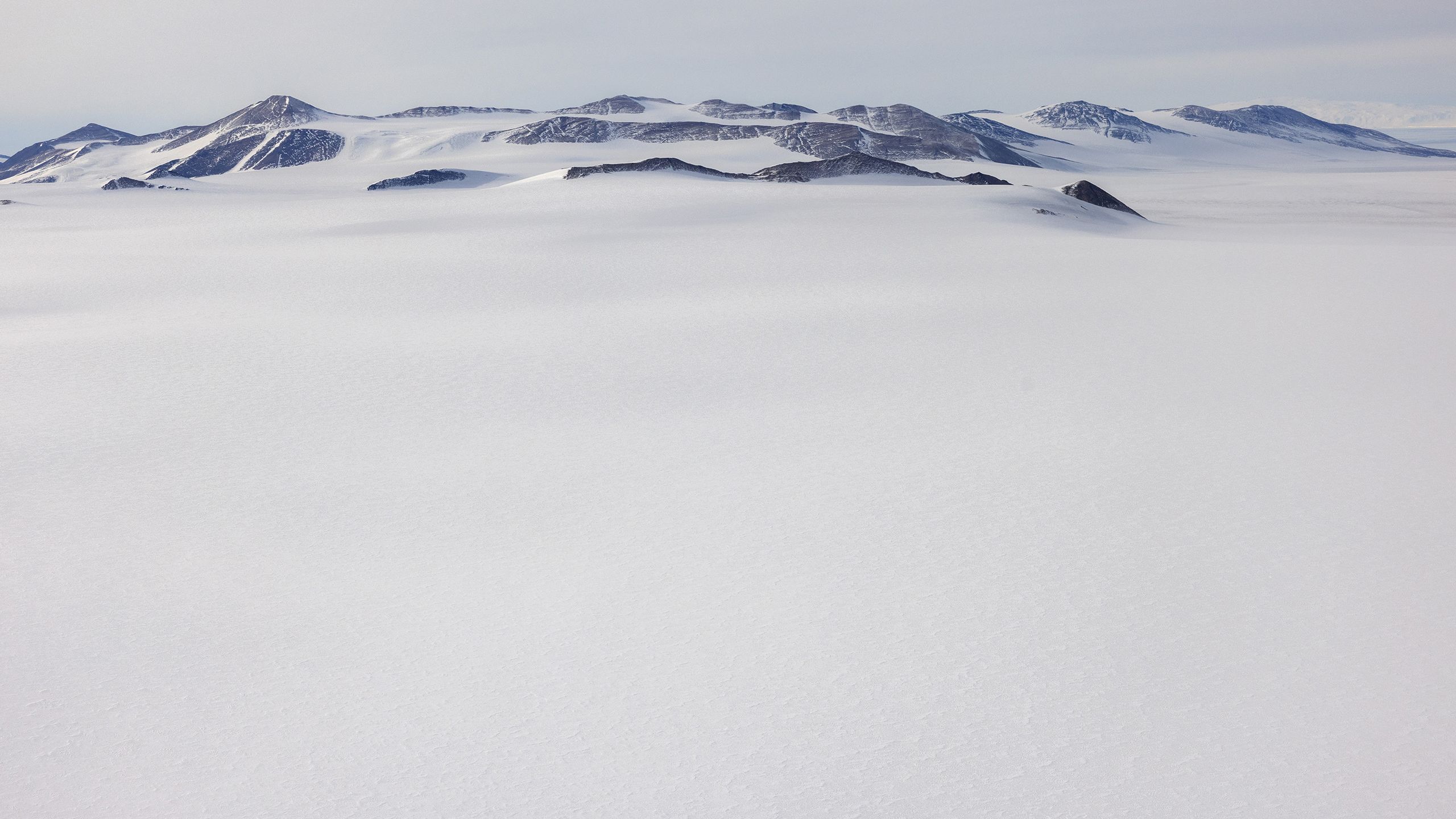
Prime Minister Jacinda Ardern visited Antarctica last month for the first time.
The purpose of the trip was to celebrate the 65th anniversary of Scott Base and see the scientific research, environmental protection, heritage conservation and day-to-day operations performed by Kiwis working in Antarctica.
It was a first-hand experience of the challenges of getting to, living on and getting off the ice.
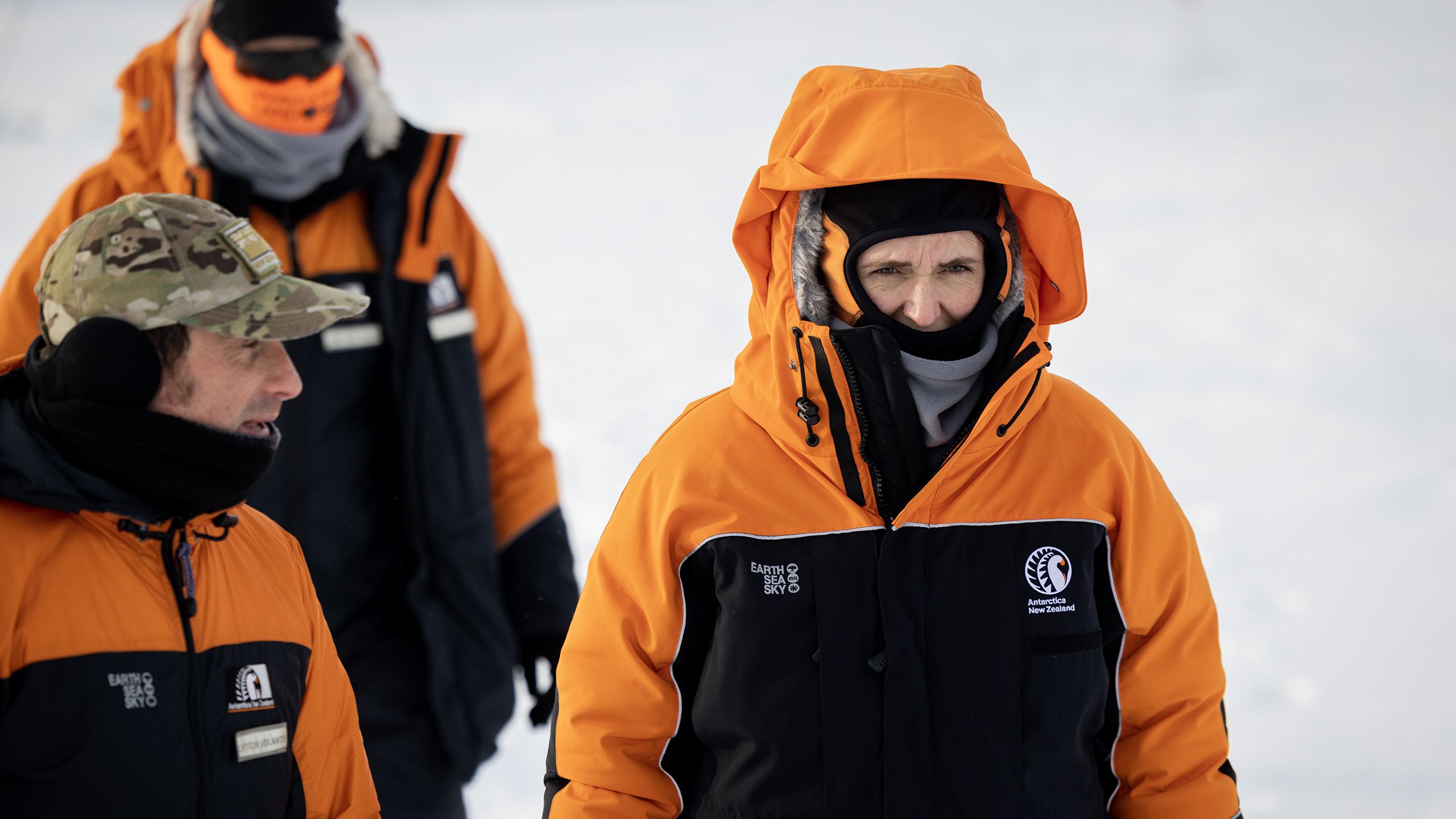
Want to catch a boomerang? Fly to Antarctica.
It’s the cute colloquial term describing flights south that return to Christchurch without landing on the ice.
It’s common and the Prime Minister and her accompanying party got a taste of it.
Day one and after two hours on the RNZAF C130, the captain informs that crosswinds on the landing strip are possibly too strong.
Better to turn around now rather than fly the full seven hours each way or diminish the fuel beyond the point of no return.
It’s disappointing but I still need a shot for the news. I was obviously hoping for a wide, well-lit icy expanse for a backdrop but instead I’m stuck in this dark, stark, noisy cabin.
Thankfully, the Prime Minister and her fishing authority partner, Clarke Gayford, like to read. She is deep into an Ernest Shackleton bio and he’s with a tale of chasing fish pirates.
The turnaround puts immediate pressure on whether Ardern will finally make it to Antarctica after previous planned trips were scuppered by Covid-19.
You see, beds at Scott Base are at a premium.
The demand is intense thanks to its new redevelopment kicking off and scientists wanting to resume Covid-disrupted projects, along with accommodating the necessary operations staff.
The Prime Minister’s visit, like all others before, was unashamedly going to be a highlights reel.
Get in, meet the staff, visit the explorer’s huts, acknowledge the Erebus disaster site, experience the iconic Dry Valleys, see science in action, call on the Americans at McMurdo Station and learn more about the redevelopment - and then leave.
The original plan was for the pared-down tour party to do all this over three nights.
Now it has to be crunched over two — Scott Base needs the beds.
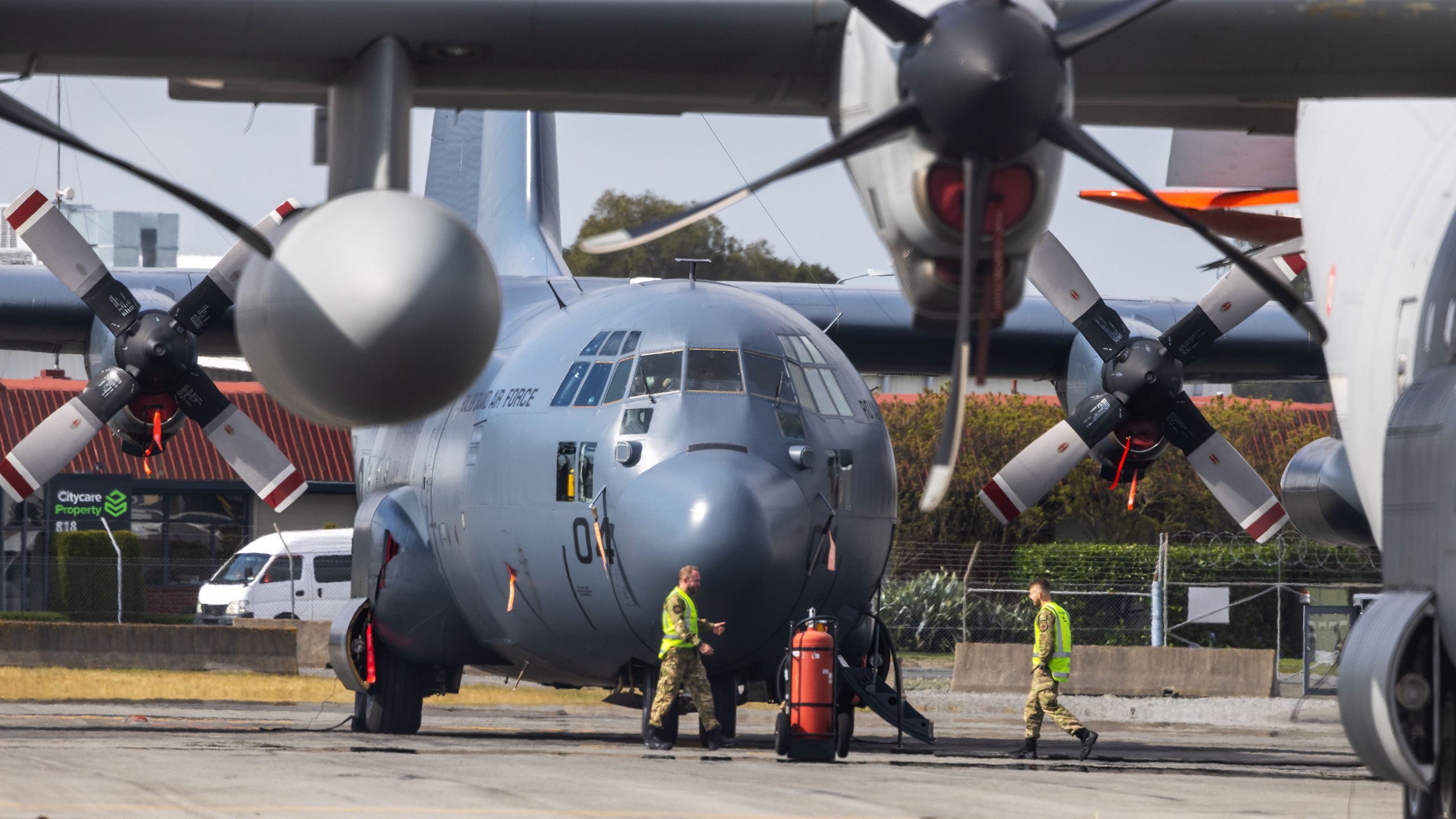
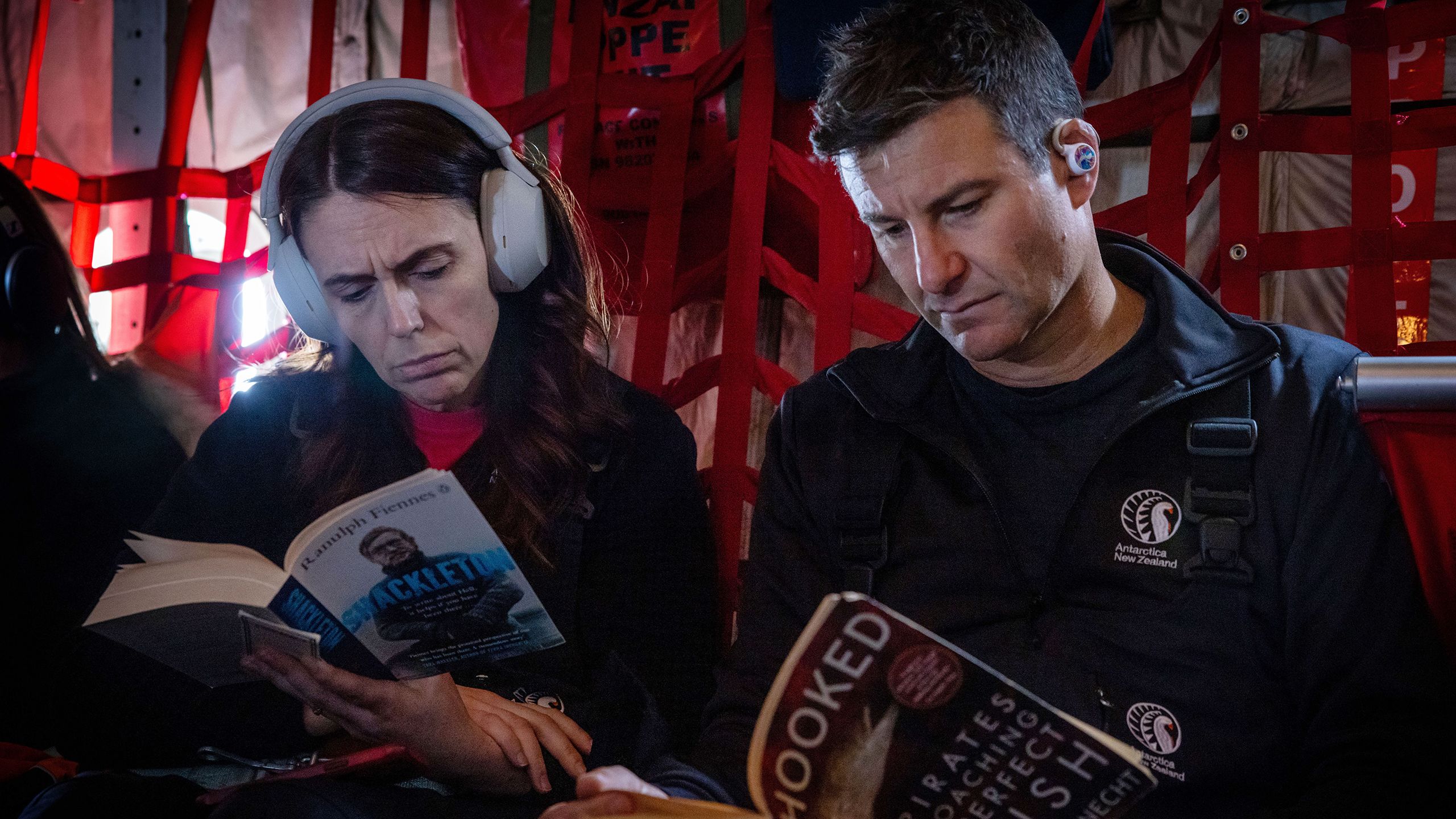

Senior adviser Shayne Misselbrook stands in front of the Taylor Glacier in the Taylor Valley in Victoria Land, Antarctica.
Senior adviser Shayne Misselbrook stands in front of the Taylor Glacier in the Taylor Valley in Victoria Land, Antarctica.
Antarctica’s expanse is hard to gauge even when you’re experiencing just a slice of the continent.
The Ross Ice Shelf, where we land in a US Airforce C17 Globemaster, is the size of France.
The mountains of the Royal Society Range are just over there, about 100km away.
The volcanic summit of Erebus looks like it can be conquered in an afternoon but actually rises 3794m from the sea — higher than Aoraki/Mt Cook.
The South Pole is still 1350km away and we’ve already traveled 3800 from Christchurch.
It’s bamboozling flying over the huge glaciers spilling down from the Antarctic plateau. I love the scale.
Here you need to be big to have any significance, and no one is.
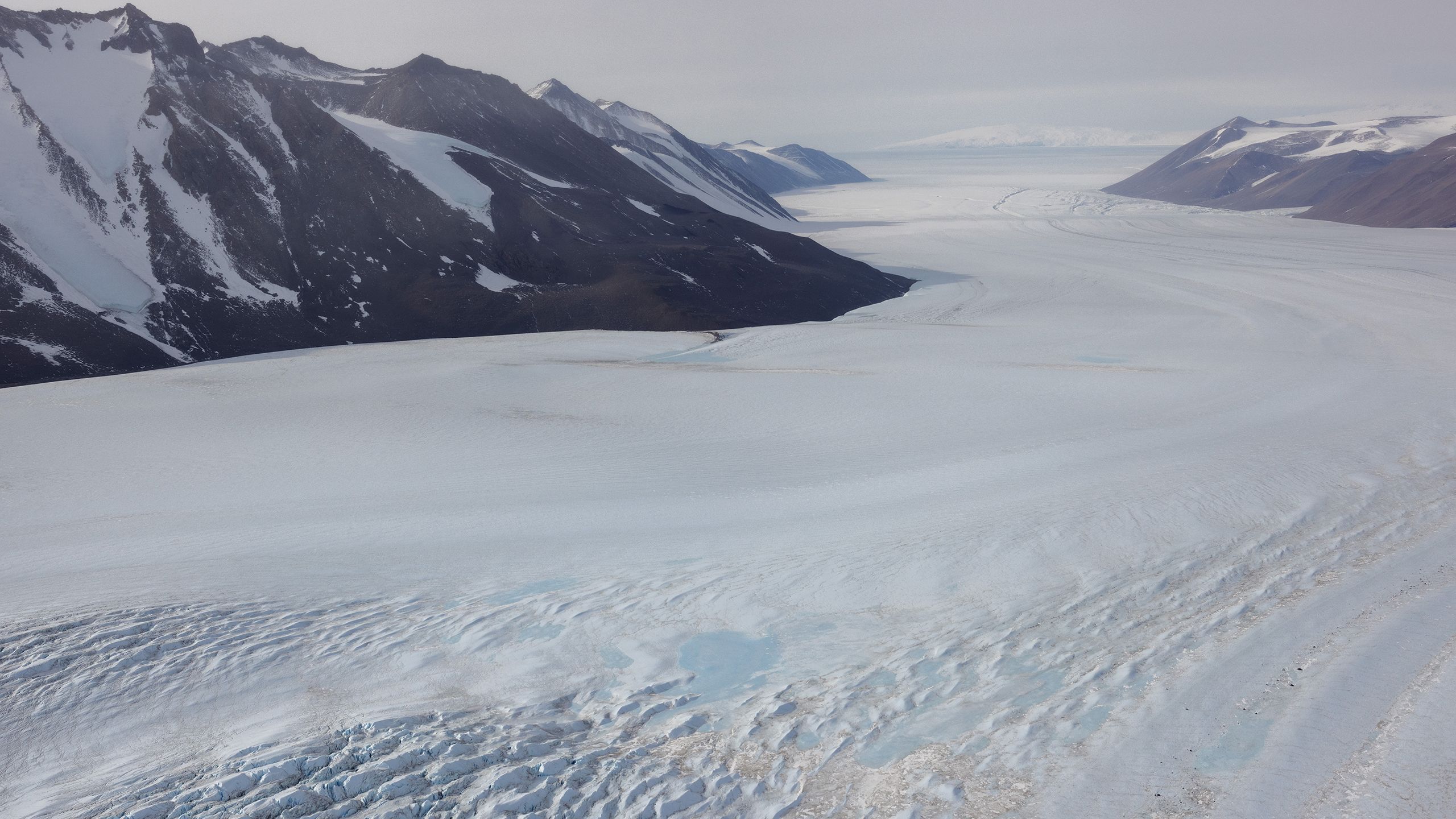

The Ross Sea ice stretches away to the open ocean. This particular area is covered by rock and dust debris blown from Black Island.
The Ross Sea ice stretches away to the open ocean. This particular area is covered by rock and dust debris blown from Black Island.
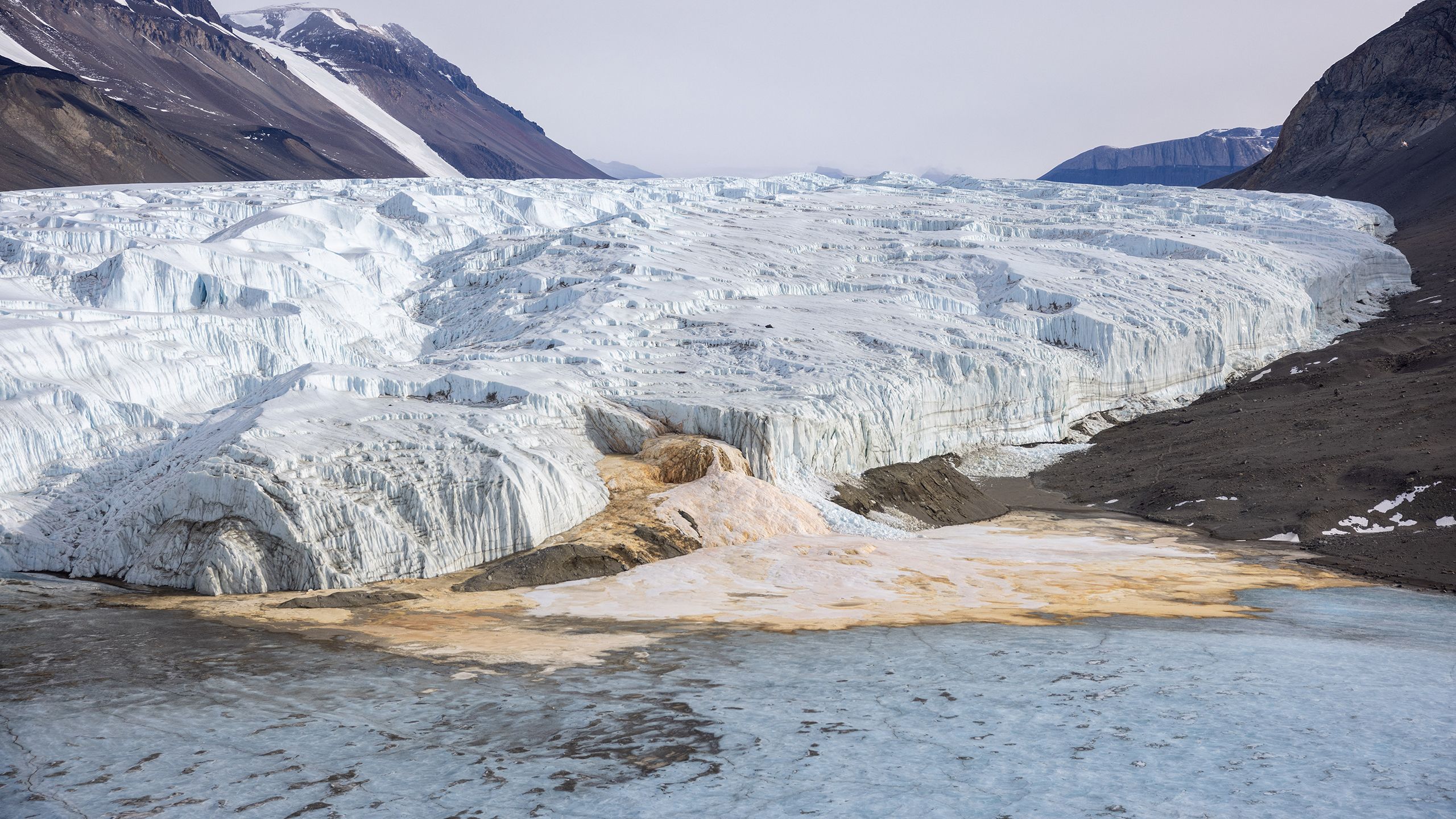
The ochre-coloured Blood Falls flow from the tongue of the Taylor Glacier as if it is bleeding. The outflow is actually an iron oxide-tainted plume saltwater flowing from the glacier onto the ice-covered surface of West Lake Bonney in the Taylor Valley of the McMurdo Dry Valleys. The saltwater source is a subglacial pool covered by about 400 metres of ice several kilometres from the outlet.
The ochre-coloured Blood Falls flow from the tongue of the Taylor Glacier as if it is bleeding. The outflow is actually an iron oxide-tainted plume saltwater flowing from the glacier onto the ice-covered surface of West Lake Bonney in the Taylor Valley of the McMurdo Dry Valleys. The saltwater source is a subglacial pool covered by about 400 metres of ice several kilometres from the outlet.
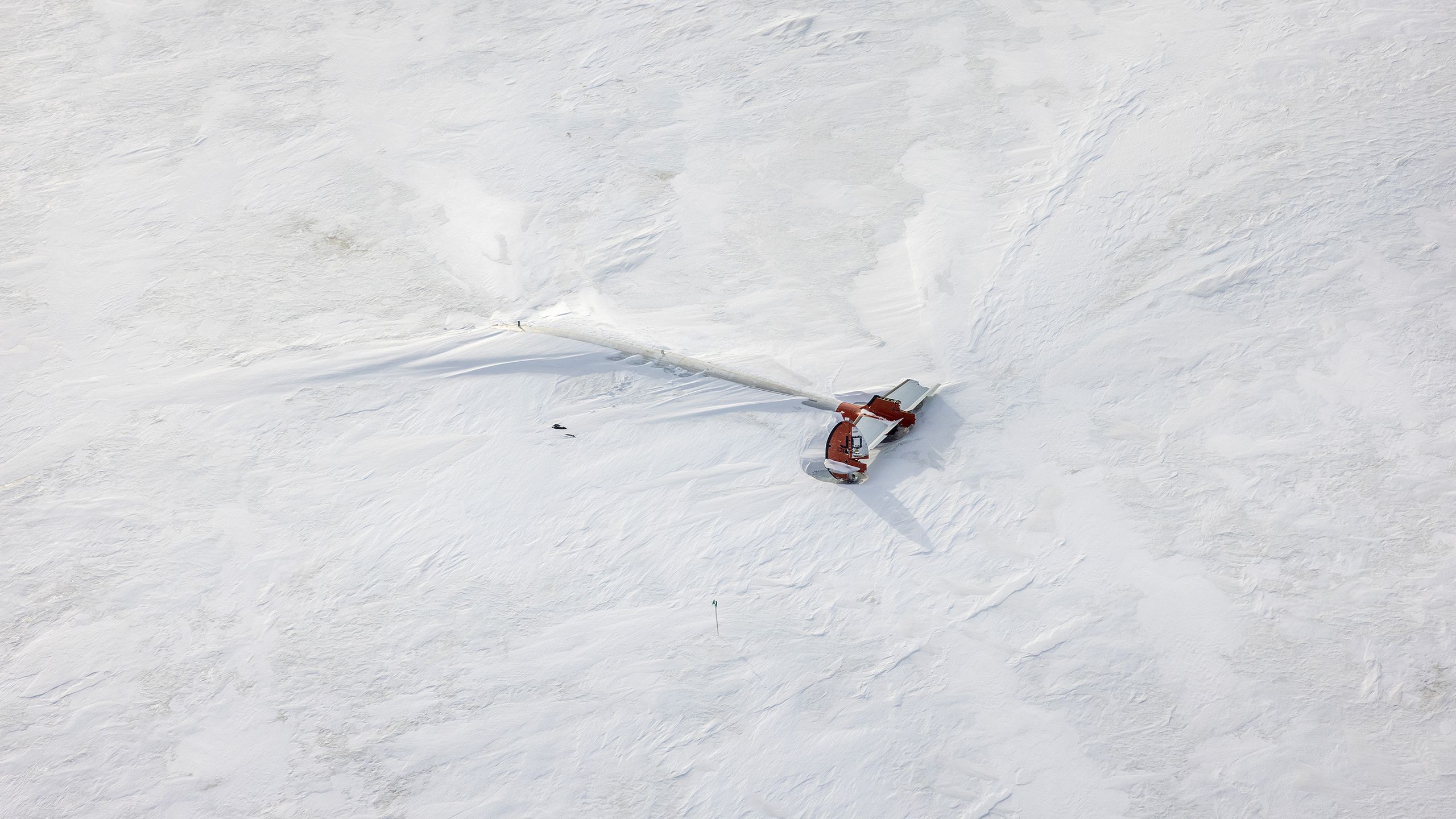
The wreck of the Pegasus, a C-121 Lockheed Constellation plane, lies in the snow and ice of the Ross Ice Shelf. The United States Navy plane crashed in 1970 during a storm with 80 people onboard. Miraculously all survived.
The wreck of the Pegasus, a C-121 Lockheed Constellation plane, lies in the snow and ice of the Ross Ice Shelf. The United States Navy plane crashed in 1970 during a storm with 80 people onboard. Miraculously all survived.

Mountains ring the edge of the Ferrar Glacier in Victoria Land. The glacier’s ice starts flowing from Taylor Dome, a part of the larger East Antarctic Ice Sheet, and glides to the Ross Sea.
Mountains ring the edge of the Ferrar Glacier in Victoria Land. The glacier’s ice starts flowing from Taylor Dome, a part of the larger East Antarctic Ice Sheet, and glides to the Ross Sea.
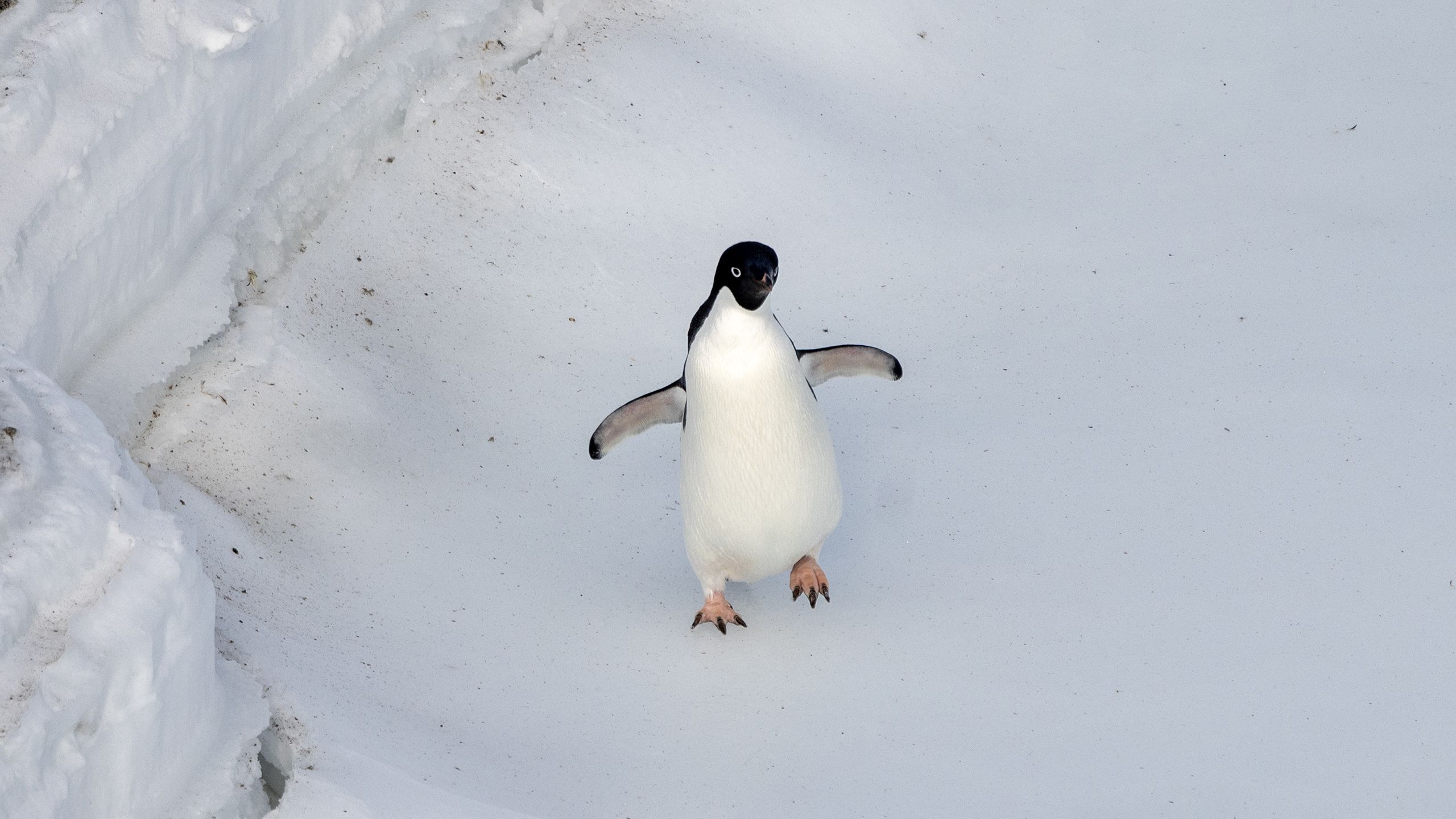
An Adelie penguin returns from the open sea toward the nesting colony at Cape Royds on Ross Island.
An Adelie penguin returns from the open sea toward the nesting colony at Cape Royds on Ross Island.

A Weddell seal lies in front of Scott Base in Antarctica. In 2017 the seals began to return to Pram Point, where the base sits, after disappearing from the area in the 1960's when they were killed for dog meat.
A Weddell seal lies in front of Scott Base in Antarctica. In 2017 the seals began to return to Pram Point, where the base sits, after disappearing from the area in the 1960's when they were killed for dog meat.

The volcanic Mount Erebus, Ross Island, Antarctica.
The volcanic Mount Erebus, Ross Island, Antarctica.
Like any government department, Antarctica New Zealand wants to show the Prime Minister of the day their work is vital, efficient and in the nation’s best interest.
They need not go in for the hard sell.
In 2021, the Government approved $344 million to redevelop the aged Scott Base because it is the kingpin of New Zealand’s ongoing presence in Antarctica.
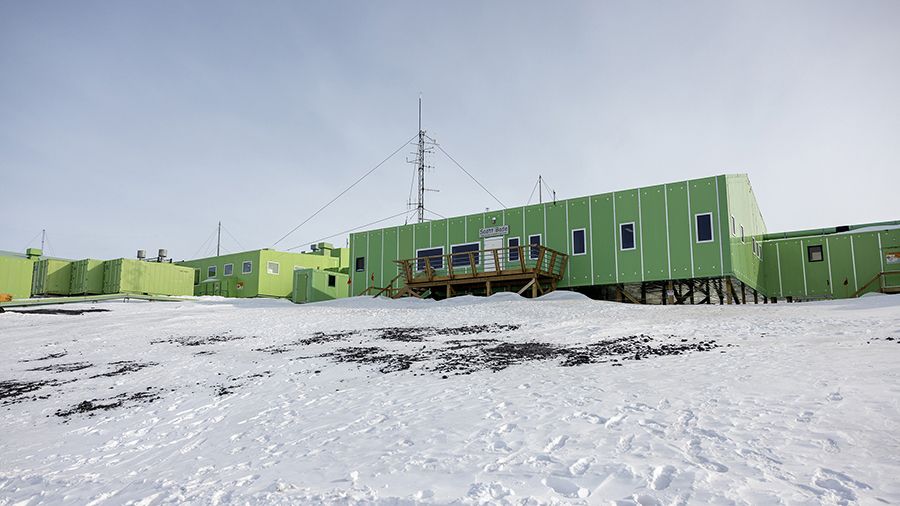
Scott Base.
Scott Base.
Think of life on the ice and it’s probably of penguins, seals and Orca. These days there are quite a few humans about in a wide mix of nationalities — Americans, Italians, Australians, Chinese, Koreans, Russians, Chileans, South Africans, Norwegians and the British.
And the Prime Minister is obviously aware of this.
“It is a place that relies on co-operation and the foundation for that is, of course, the Antarctic Treaty,” she says.

McMurdo Station.
McMurdo Station.
“We are though, just as we were in a period where internationally you see that parts of the world are becoming increasingly contested, Antarctica is part of that too.
"And so it’s incredibly important that New Zealand maintains its strong position over the role it plays here and over the Ross Dependency. But it’s also important that we maintain our position of peace, environmental protection and research.”

Jacinda Ardern contemplates a bygone time of explorers in the Nimrod Hut built by Ernest Shackleton. Visiting the hut was a life-long dream for the Prime Minister.
Jacinda Ardern contemplates a bygone time of explorers in the Nimrod Hut built by Ernest Shackleton. Visiting the hut was a life-long dream for the Prime Minister.

Sir Ernest Shackleton's Nimrod Hut sits in the desolate Cape Royds landscape under the shadow of the volcano, Mt Erebus. The hut was the base for Shackleton's British Antarctic Expedition in 1907-1909 where he attempted to reach the geographic South Pole. To ensure the survival of his team, Shackleton turned back 97 miles from the goal.
Sir Ernest Shackleton's Nimrod Hut sits in the desolate Cape Royds landscape under the shadow of the volcano, Mt Erebus. The hut was the base for Shackleton's British Antarctic Expedition in 1907-1909 where he attempted to reach the geographic South Pole. To ensure the survival of his team, Shackleton turned back 97 miles from the goal.
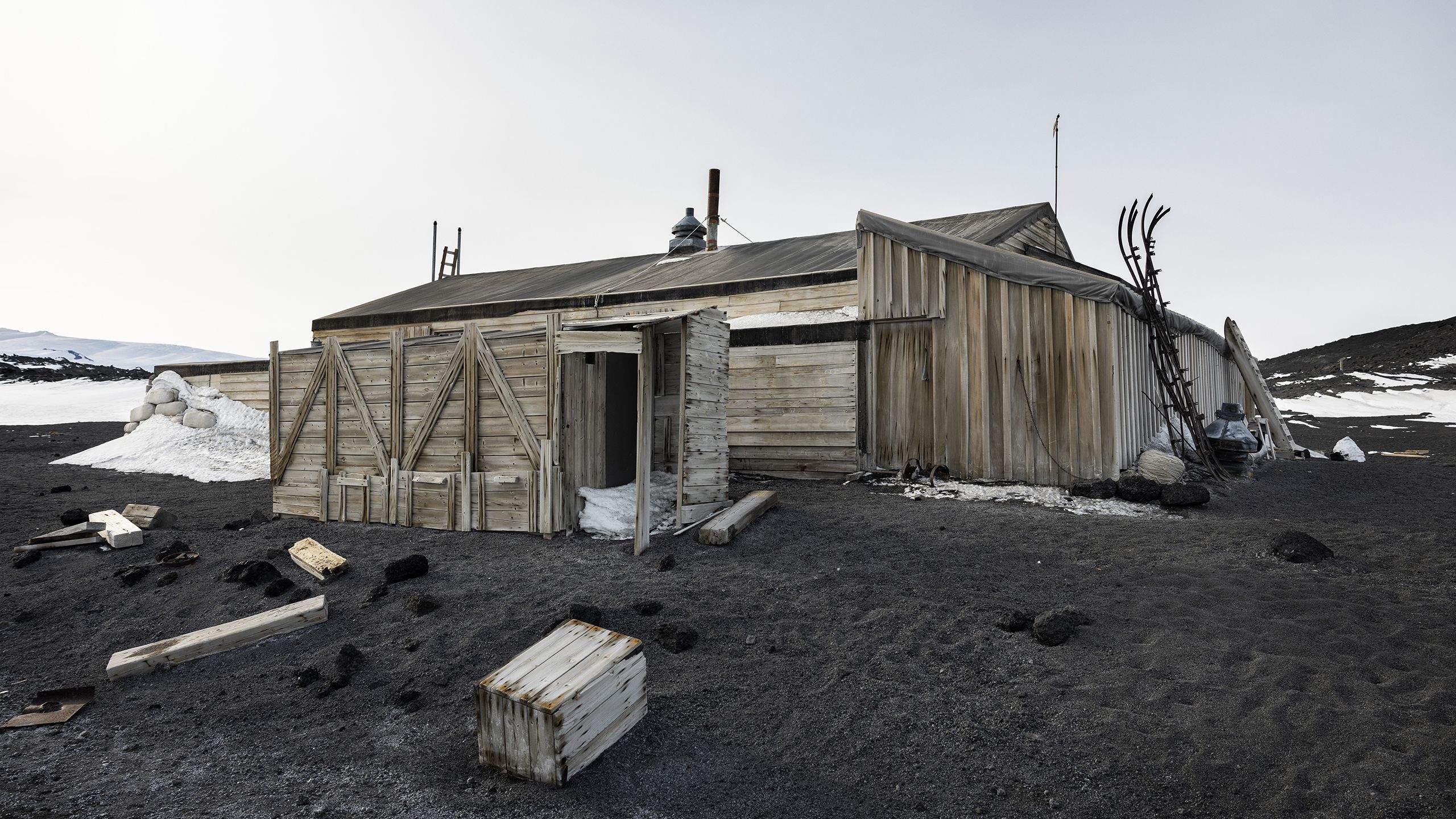
Sir Robert Falcon’s Hut from the British Antarctic (Terra Nova) Expedition 1910–1913 sits at Cape Evans on Ross Island. The expedition was Scott’s second and ultimately fatal attempt to reach the South Pole. While Scott’s party reached their goal, they were not the first after a team led by Norwegian Roald Amundsen planted their flag at the South Pole 33 days earlier.
Sir Robert Falcon’s Hut from the British Antarctic (Terra Nova) Expedition 1910–1913 sits at Cape Evans on Ross Island. The expedition was Scott’s second and ultimately fatal attempt to reach the South Pole. While Scott’s party reached their goal, they were not the first after a team led by Norwegian Roald Amundsen planted their flag at the South Pole 33 days earlier.

Prime Minister Jacinda Ardern and her partner Clarke Gayford look about Sir Robert Falcon Scott's hut at Cape Evans. The Antarctica Heritage Trust, a New Zealand-based charity established in 1987, manages the Ross Sea Heritage Restoration Project caring for five expedition bases in the Ross Sea region including two of Scott's expedition huts.
Prime Minister Jacinda Ardern and her partner Clarke Gayford look about Sir Robert Falcon Scott's hut at Cape Evans. The Antarctica Heritage Trust, a New Zealand-based charity established in 1987, manages the Ross Sea Heritage Restoration Project caring for five expedition bases in the Ross Sea region including two of Scott's expedition huts.

Prime Minister Jacinda Ardern stands in front of the cross above Sir Robert Falcon Scott's Cape Evans hut. It was erected in memory of Aeneas Mackintosh and Victor Hayward died in 1916 attempting to walk on unsafe pack ice in a blizzard from Hut Point to the party's main base at Cape Evans.
Prime Minister Jacinda Ardern stands in front of the cross above Sir Robert Falcon Scott's Cape Evans hut. It was erected in memory of Aeneas Mackintosh and Victor Hayward died in 1916 attempting to walk on unsafe pack ice in a blizzard from Hut Point to the party's main base at Cape Evans.
Apart from maintaining New Zealand’s place on the ice, Scott Base is the staging post for Antarctic science projects and heritage conservation work.
The science includes studying platelet ice at the intersection of the ice shelves and sea ice, the Emperor Penguin populations, and marine drifters (plankton) in the Ross Sea ecosystem.
It’s all about how fast the ice sheets might melt, how Antarctica will change and how this will impact the rest of the planet in this warming world.
Important stuff if we are to have any understanding of our vulnerable future.
But it’s possibly the past that had the biggest emotional impact on the Prime Minister.
Ardern is a self-confessed fan of the early Antarctic explorers, especially Ernest Shackleton.
She had the chance to enter his Nimrod Hut at Cape Royds by herself. A chance to reflect on the reality of the hardships those explorers sustained.
I ask what it means to be in Shackleton’s Hut and her voice wobbles and eyes well.
It’s a big deal to have made it here.
“His name became synonymous with leadership because he saved his men,” she says.
“I think he knew success would come down to his ability to keep the team together and really hard times. So there’s a lot to take away on that.”


Prime Minister Jacinda Ardern examines a core of 300,000-year-old ice at the Albert P. Crary Science and Engineering Centre at McMurdo Station.
Prime Minister Jacinda Ardern examines a core of 300,000-year-old ice at the Albert P. Crary Science and Engineering Centre at McMurdo Station.

Marine Ecology Technician Lily Pryor-Rodgers manages the tether of an underwater remote vehicle at Pram Point on the Ross Sea ice.
Marine Ecology Technician Lily Pryor-Rodgers manages the tether of an underwater remote vehicle at Pram Point on the Ross Sea ice.
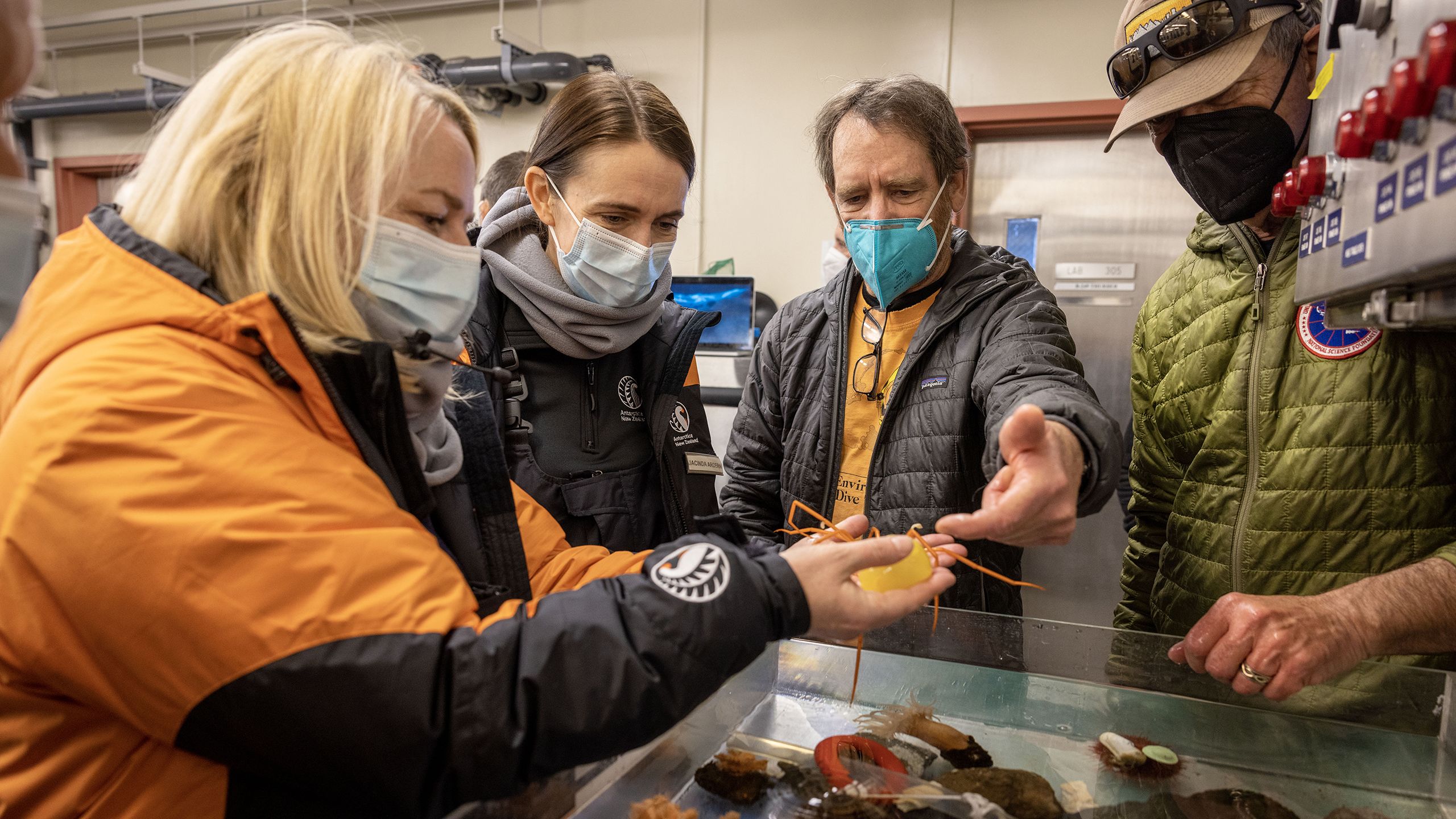
Dame Therese Walsh, left, and Prime Minister Jacinda Ardern experience some of the marine creatures held at the Albert P. Crary Science and Engineering Centre at McMurdo Station.
Dame Therese Walsh, left, and Prime Minister Jacinda Ardern experience some of the marine creatures held at the Albert P. Crary Science and Engineering Centre at McMurdo Station.
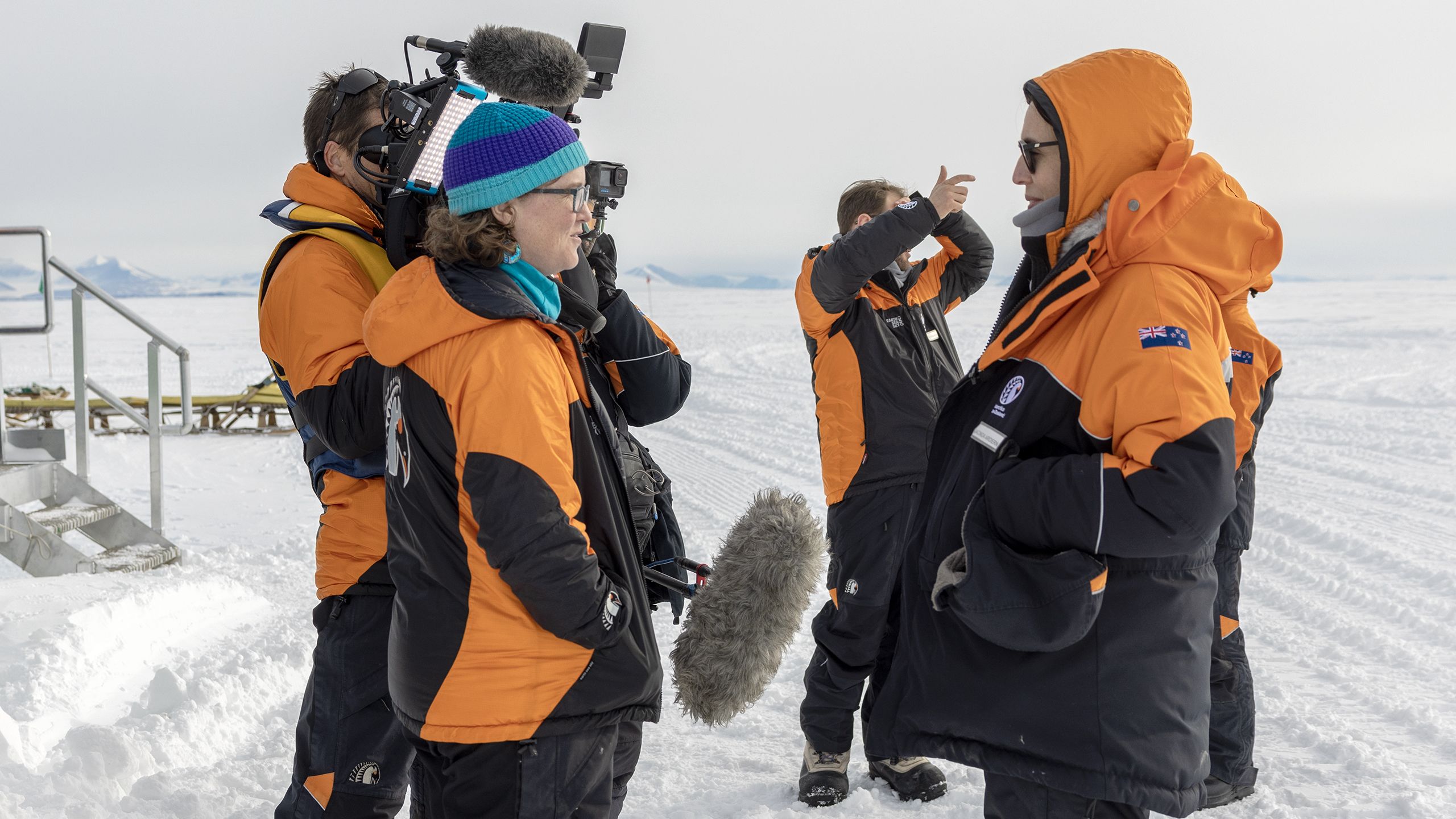
NIWA scientist Dr Natalie Robinson talks with Prime Minister Jacinda Ardern about the platelet ice study she is leading on the frozen Ross Sea. A documentary is being filmed on the project.
NIWA scientist Dr Natalie Robinson talks with Prime Minister Jacinda Ardern about the platelet ice study she is leading on the frozen Ross Sea. A documentary is being filmed on the project.
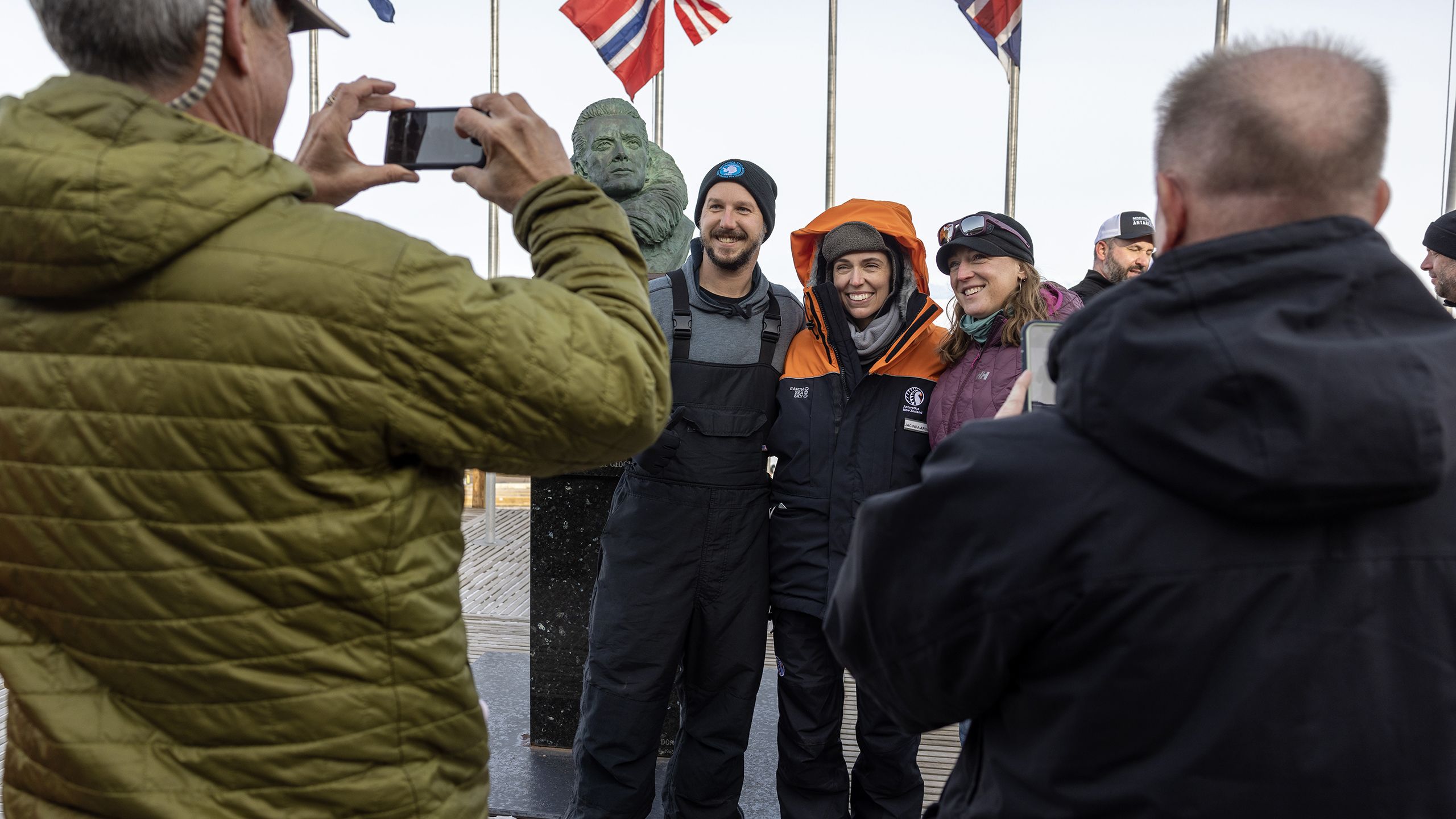
Prime Minister Jacinda Ardern poses for photos with McMurdo Station staff. Ardern was treated like a celebrity when she visited the scientists working at the Albert P. Crary Science and Engineering Centre at McMurdo Station.
Prime Minister Jacinda Ardern poses for photos with McMurdo Station staff. Ardern was treated like a celebrity when she visited the scientists working at the Albert P. Crary Science and Engineering Centre at McMurdo Station.
Mt Erebus looms large above Scott Base and on its northern slopes, the site of the crash of Air New Zealand flight TE901 casts a large shadow on the Kiwi psyche.
It is the country’s greatest peacetime disaster in terms of lives lost with 257 dying as the DC10 careened into the mountain in 1979.
For Prime Minister Ardern and Air New Zealand board chair Dame Therese Walsh, their first Antarctic journey held particular significance.
In 2019 during a ceremony on the 40th anniversary of the flight, Ardern issued a “wholehearted and wide-reaching” apology on behalf of the New Zealand Government which owned the airline when the disaster occurred.
“After 40 years, on behalf of today’s Government, the time has come to apologise for the actions of an airline then in full state ownership; which ultimately caused the loss of the aircraft and the loss of those you loved.”
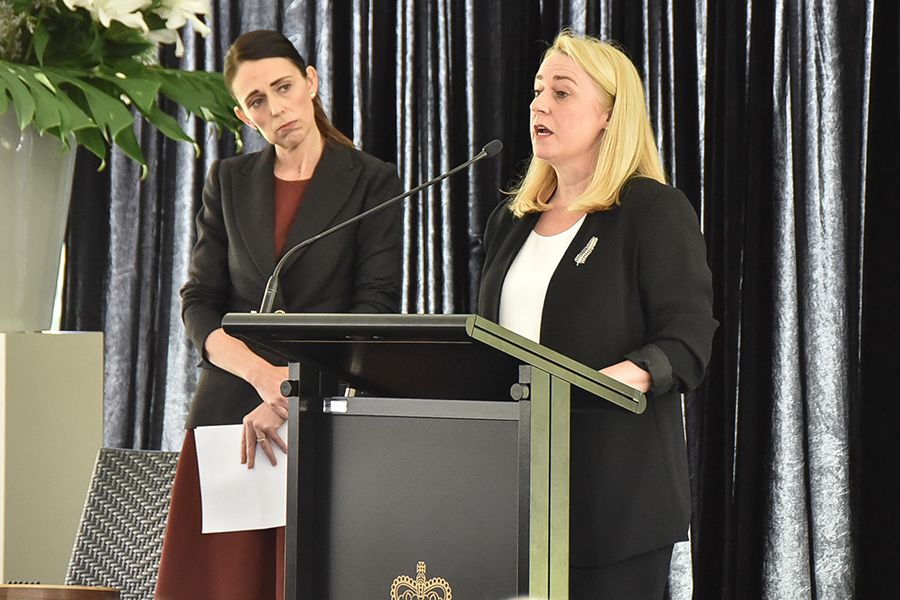
At the same ceremony, in front of families of victims, Walsh also said sorry.
“I apologise on behalf of an airline, which 40 years ago failed in its duty of care to its passengers and staff.
“And I apologise again on behalf of the airline for the way in which the families of those lost on Mt Erebus were treated in the aftermath of the accident. Better care should have been taken of you.”
I can’t know what was on Walsh’s mind as we flew above the crash site.

The memorial cross at the Erebus crash site.
The memorial cross at the Erebus crash site.
For me, looking down at Lewis Bay, I did not enjoy picturing the large passenger plane bearing south toward Erebus at a height lower than we were in the helicopter.
The only consolation was knowing the occupants on the flight of a lifetime had been oblivious to the catastrophe that was about to end their lives.

Lewis Bay, Ross Island, where flight TE901 descended to 1500 feet before turning south and unknowingly aimed directly at Mount Erebus.
Lewis Bay, Ross Island, where flight TE901 descended to 1500 feet before turning south and unknowingly aimed directly at Mount Erebus.
Back at Scott Base, Walsh and Ardern, posed for a photo by the Koru memorial.
It was dedicated and blessed by the former Anglican Dean of Christchurch, the Reverend Peter Beck, in memory of all lives lost in Antarctica.
Sadly, so many of those lives were from flight TE901.
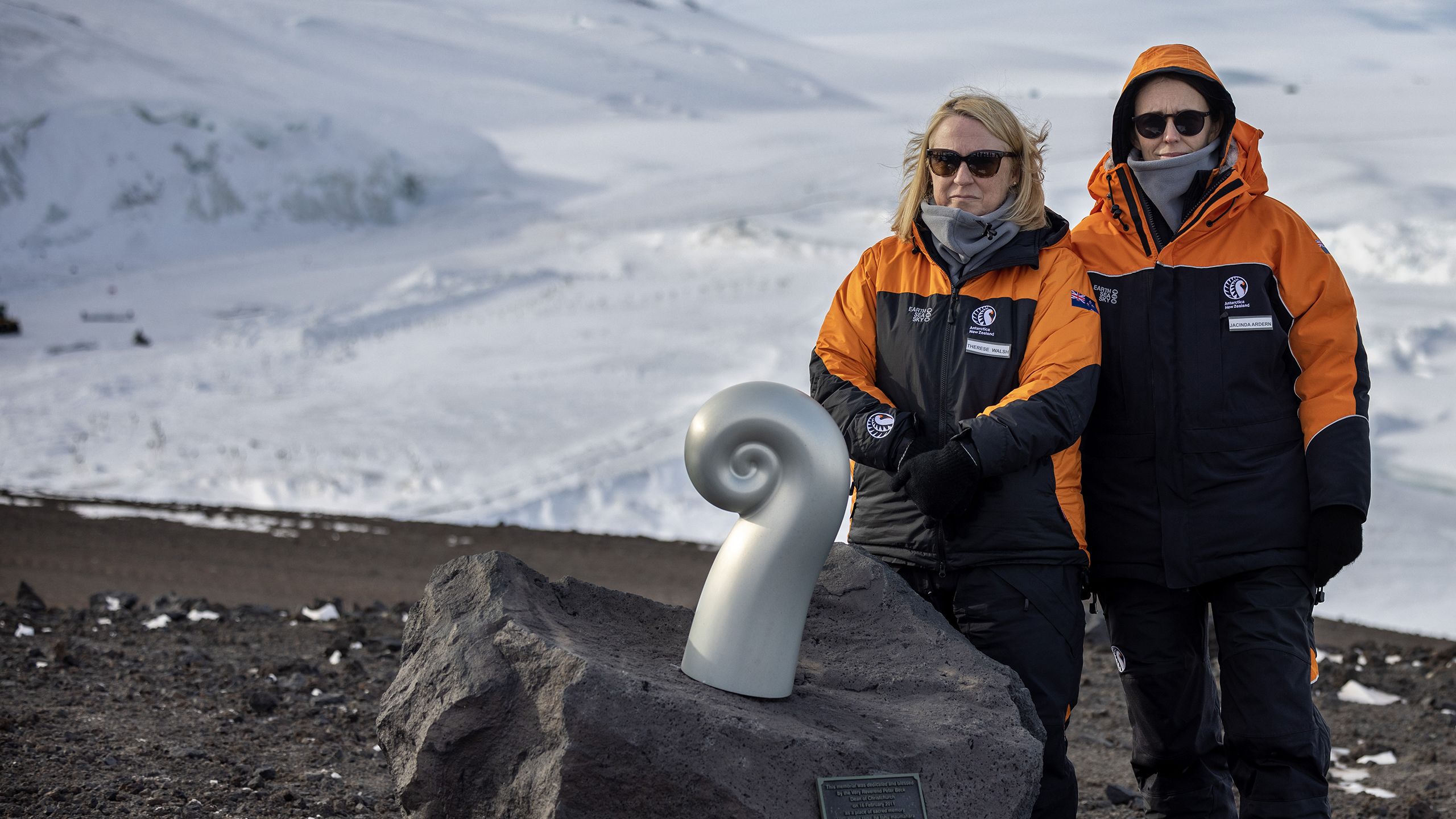
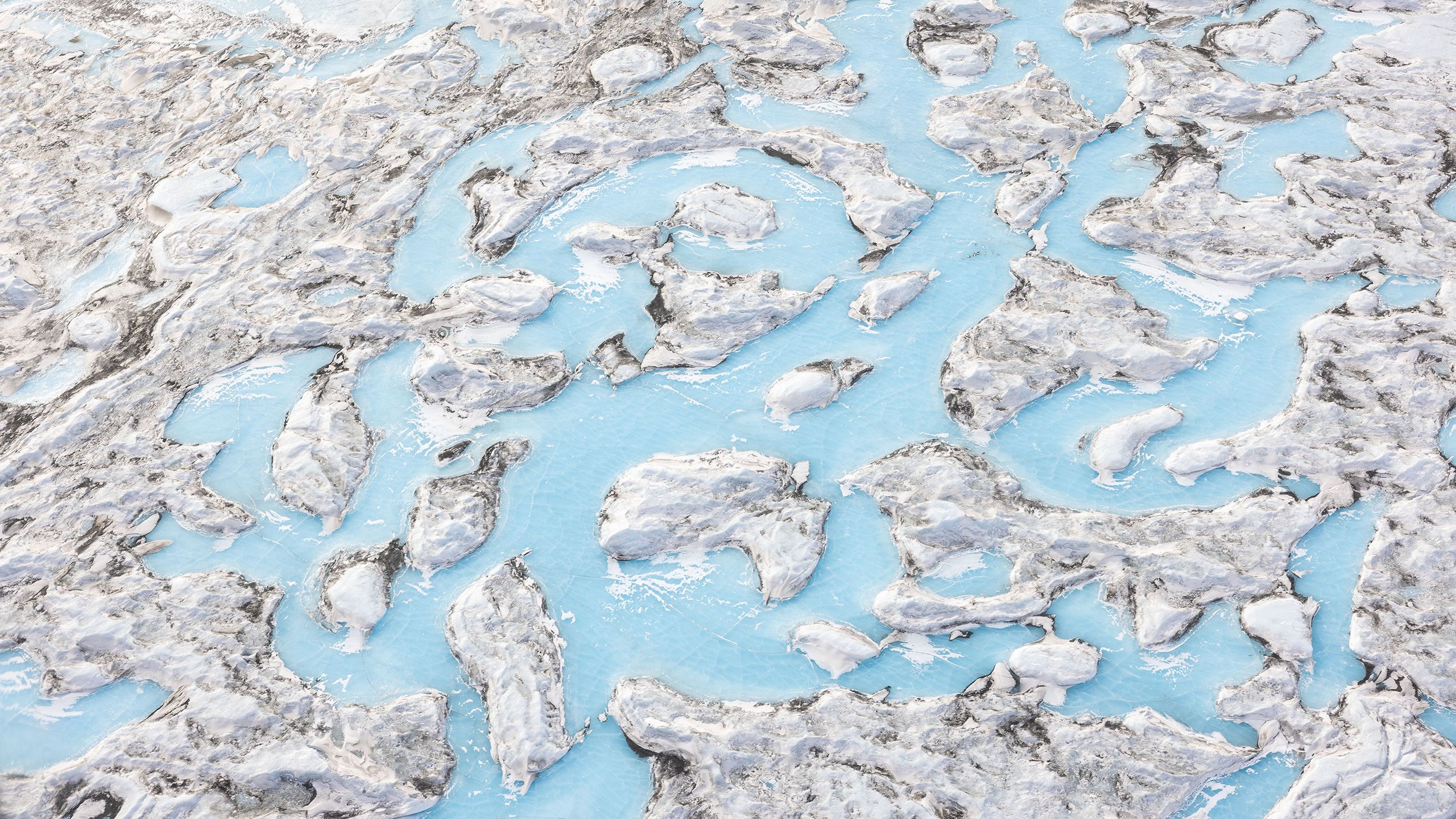
Blue ice mixed with snow and debris form patterns where a glacier flows over the Ross Sea.
Blue ice mixed with snow and debris form patterns where a glacier flows over the Ross Sea.
The plan to get home was to leave late on Friday, try to sleep (although, I’d be working) and land in New Zealand as the Saturday sun rose.
It didn’t pan out.
As the haze of smoke entered the aged RNZAF C130 fuselage, it was obvious there was an engine problem and we weren’t going anywhere.
Maybe in an effort to gee up a demoralised crew, the PM quipped that replacements for the airforce's aging transport planes had already been paid for.
Again, it was disappointing. What would happen now? We had learned the American C17’s were also broken down in Christchurch and wouldn’t be flying to the ice in the next day or two.
Somehow Antarctic Operations general manager Simon Trotter and his capable Scott Base staff found beds for everyone and we woke to the news we had a flight home with the Italians.
It was that Antarctic co-operation in action. The Italians used US facilities to load and fuel their plane, then gave a lift to a handful of Kiwis and Americans before landing at a New Zealand airport, all before the Saturday sun set.


Prime Minister Jacinda Ardern with crew members of the Italian Airforce C-130 transport plane which flew her from Antarctica to New Zealand.
Prime Minister Jacinda Ardern with crew members of the Italian Airforce C-130 transport plane which flew her from Antarctica to New Zealand.